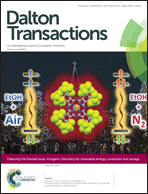A novel perovskite based catalyst with high selectivity and activity for partial oxidation of methane for fuel cell applications
Abstract
Solid oxide fuel cells (SOFCs) have the potential to revolutionise the present fuel economy due to their higher fuel conversion efficiency compared with standard heat engines and the possibility of utilizing the heat produced in a combined heat and power system. One of the reasons they have yet to fulfil this potential is that the conventional anode material of choice, a nickel/yttria-stabilised zirconia cermet, requires a high temperature production process and under operating conditions is susceptible to carbon and sulphur poisoning. Perovskite-based materials have been proposed as potential anode materials for SOFCs due to their potentially high electronic conductivity and catalytic properties. One of the problems in realizing this potential has been their low catalytic activity towards methane reforming compared to conventional nickel based cermet materials. A nickel doped strontium zirconate material produced by low temperature hydrothermal synthesis is described which has high activity for methane reforming and high selectivity towards partial oxidation of methane as opposed to total oxidation products. Initial studies show a very low level of carbon formation which does not increase over time.

- This article is part of the themed collection: Inorganic Chemistry for Renewable Energy Conversion and Storage

 Please wait while we load your content...
Please wait while we load your content...